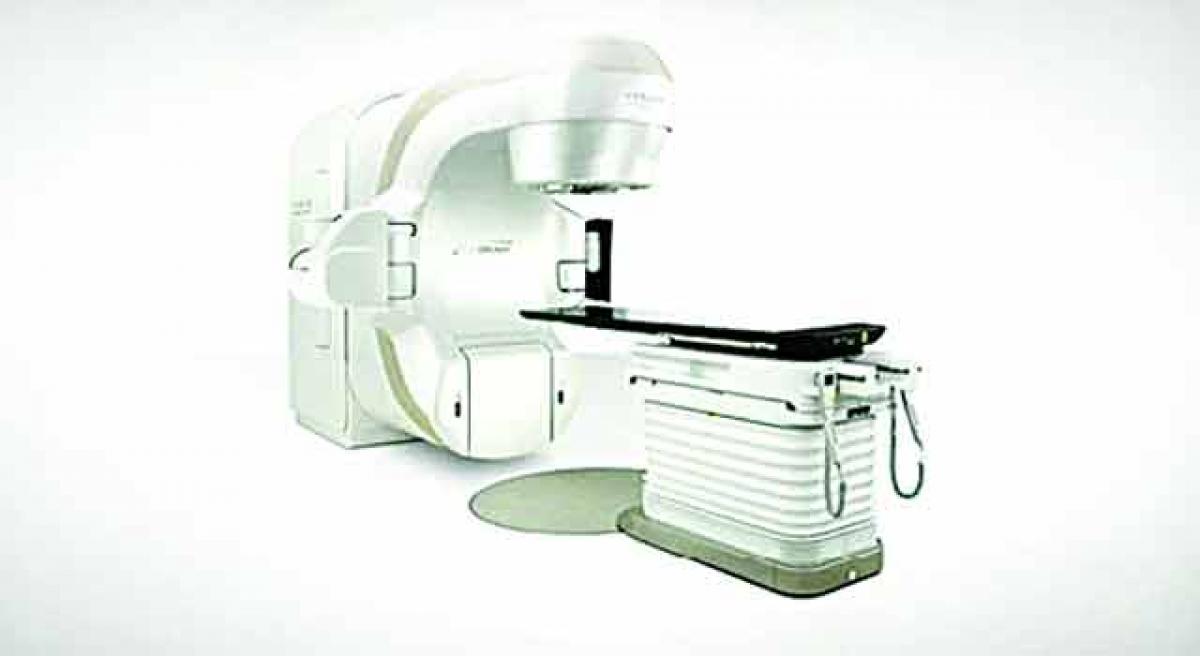Live
- Job mela at Masab Tank tomorrow
- New toilets facilitated for MPP school students
- Steps to safeguard natural springs gain momentum
- RWAs want officials to clear fog over SCB-GHMC merger
- Tanks, canals remain neglected despite execution of MGNREGS works
- BRS to celebrate Deeksha Diwas on Nov 29, Dec 9
- NCC Day grandly celebrated at SITAM
- CITU demands rollback of strategic sale of VSP
- 7-Year-old girl sexually assaulted in Tirupati
- PM Modi highlights govt's efforts to make Odisha prosperous and one of the fastest-growing states
Just In
Stereotactic Radio Surgery the most advanced non-invasive treatment for Brain Tumors


Radio Surgery is a bloodless surgery for neurological diseases. It does not require the skull to be opened. In this procedure externally generated ionizing radiation is used to inactivate or eradicate defined targets in the brain or spine without requiring any incisions. Instead of many doses of radiation therapy to treat the problem area, a very high dose of radiation in a few focused locations i
Radio Surgery is a bloodless surgery for neurological diseases. It does not require the skull to be opened. In this procedure externally generated ionizing radiation is used to inactivate or eradicate defined targets in the brain or spine without requiring any incisions. Instead of many doses of radiation therapy to treat the problem area, a very high dose of radiation in a few focused locations is used.
In this type of surgery the patient is treated in one to five sessions and returns home very soon. Stereotactic Radio Surgery (SRS) was originally developed to treat small, deep brain tumors. Over the years SRS has become a precise and powerful tool.
Why Stereotactic Radio Surgery?
Tumors in the brain, the blockages in the blood vessel, and a few nervous system conditions are difficult to address with an open surgery.
In the past, surgeries were not performed owing to the size and location of the tumor or poor health condition of the patient. But now SRS is a growing, non invasive way to treat benign brain and spine tumors that are smaller than three cm. It is also useful for treating metastatic disease.
How is SRS Performed?
The treatment consists of four steps:
1. Attaching the mask
2. Imaging involving CT scans, MRI or Angiography
3. Treatment Planning
4. Treatment
Which conditions are treated by SRS?
Patients with pituitary adenomas (tumors in pituitary gland), trigeminal neuralgia, brain tumors, arterio-venus malformations (AVMs - tangles blood vessels that leak and disrupt normal flow) and other serious brain disorders can be treated by this advanced procedure. The most commonly addressed conditions include:
- Meningiomas – Slow growing vascular tumors in areas where surgery is risky
- Acoustic Schwanomma – Tumors arising from vestibular nerve, close to sensitive structures.
- Hemangioblastoma – Vascular tumors that are difficult to operate
- Cavernomas – Small blood vessel problems that lead to seizures
- Orbital tumors
- Chordomas
- Deep brain tumors
- Residual tumor cells after surgery
SRS is a safe, precise and accurate non-invasive procedure. With this type of advanced surgery, there is no risk of tumor seeding, hemorrhage and infection. SRS is also helpful to treat the elderly patients and the patients who are too weak or ill to undergo open surgery. SRS is also helpful in removing or killing any remaining tumors or tumor cells after performing a surgery that treats a cancerous tumor.
By:Dr. Ravi Suman Reddy
Neuro & Spine Surgeon Continental Hospitals
www.continentalhospitals.com 7799661661 / 7093700488

© 2024 Hyderabad Media House Limited/The Hans India. All rights reserved. Powered by hocalwire.com






